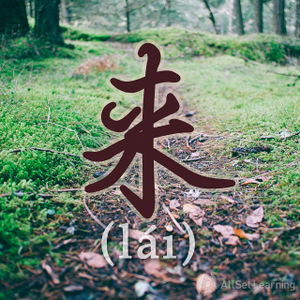Difference between revisions of "Using "lai" to connect two verb phrases"
(Created page with "{{Stub}} {{Grammar Box}} The word 来 (lái) can be used to connect two verb phrases, relating the actions to each other. It can be translated as "in order to" or "so that" a...") |
|||
| Line 25: | Line 25: | ||
[[Category:A2 grammar points]] | [[Category:A2 grammar points]] | ||
| − | {{Basic Grammar|来|A2| | + | {{Basic Grammar|来|A2|V1 来 V2|我 学习 <em>来</em> 考得 好|grammar point|}} |
{{POS|COnjunctions}} | {{POS|COnjunctions}} | ||
| − | {{Used for|Connecting | + | {{Used for|Connecting ideas}} |
{{Translation|to}} | {{Translation|to}} | ||
Revision as of 02:42, 7 June 2013
| This article is a stub. Editors can help the Chinese Grammar Wiki by expanding it. |
-
Level
-
Similar to
-
Used for
-
Keywords
The word 来 (lái) can be used to connect two verb phrases, relating the actions to each other. It can be translated as "in order to" or "so that" and it can help in explaining reasoning.
Structure
Connecting two verb phrases is very easy. All you need to do is place 来 in between them. This has the meaning of doing the first verb to achieve the second verb.
Verb Phrase 1 + 来 + Verb Phrase 2
Examples
Needs Examples
See Also
Sources and Further Reading
Integrated Chinese: Level 2, Part 1, by Cheng & Tsui



